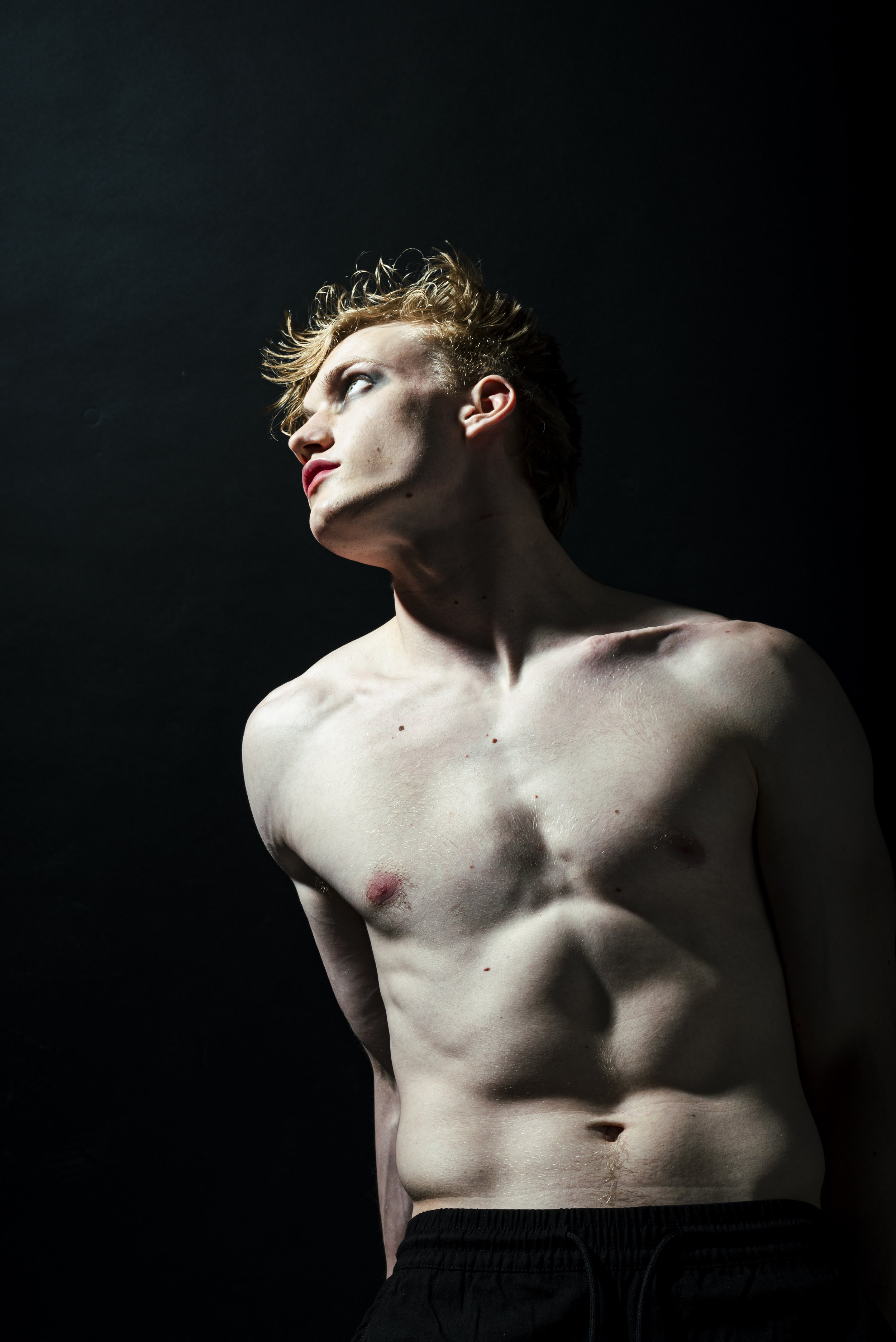Chromatic Notes
Chromatic Notes is a new thread within my blog where I share experiments with lighting, colours, and form in the studio. Less about polished outcomes and more about process, it’s a space to pull apart what worked, what didn’t, and the “happy accidents” that shape my practice. Think of it as a sketchbook, notes that document my journey as I refine techniques and discover new directions.
#1- Momentum: Simple Light Experiments in Studio Creative Portraiture
Momentum is my take on movement, contrast, and light, so definitely not a masterclass in chiaroscuro, but more of an exploratory dance with it. The kind of experimentation that happens when you're learning by doing, guided by instinct and a bit of chance. This session wasn’t about perfection; it was about testing, adjusting, and discovering what happens when you let curiosity lead the way.
The original idea was to create something dramatic but with a slightly editorial feel; therefore, I worked with two new faces from the modelling agency Another Mother, Ollie and Oliver.
Visually very different yet complementary, one was muscular, with short blond hair; the other slim, with longish dark curly hair. Both wore wide-legged trousers, bought from ASOS (which I kept, as they always come in handy for other projects), which helped create a sense of movement even in stillness.
Some portraits were solo, while others captured the two models together; they were comfortable with each other, and that ease is evident in the images.
All photos, settings: Nikon D750 - Nikkor 50mm F/11 - Shutter Speed 1/200 - ISO 160
The setup was intentionally simple. Black Colorama backdrop at the back and white Colorama backdrop on the floor. I started with a single Elinchrom 400 speedlight fitted with a standard reflector, placed high and to the model’s right - I believe at circa 45 degrees.
Later, I added a second light to the front, and here’s where things get a little fuzzy. Looking at the pictures now, I think it might’ve been a beauty dish, judging by the round white catchlight in the eyes of one of the models. That’s a useful tip if you’re starting in studio photography: catchlights can help you reverse-engineer the lighting setup, even when your memory fails you (as mine at times does, I always mean to write things down!).
Towards the end of my session, I went back to one light with a standard reflector, this time placed in front of the model. I also experimented with black polyboards to add depth and shadow, placed on the left side of the models, and for them to act as my backdrops when placed at the back!
From top left, images 1/4/5 settings: Nikon D750 - Nikkor 50mm F/11 - Shutter Speed 1/200- ISO 160
From top left, images 2/3/5 settings: Nikon D750 - Nikkor 50mm F/13 - Shutter Speed 1” - ISO 100
Through the session, I moved things around as I went, changing positions, switching lights, sometimes contradicting myself, without worrying about making mistakes. That freedom to test is exactly what made this interesting and so important to improve and grow creative practice.
So, the results: some frames lean into that classic side-lit drama, while others have a gentler, more sculptural glow. It’s not quite Caravaggio, but maybe a beginner’s interpretation shaped by curiosity, experimentation, and ‘momentum’.
Settings: Nikon D750 - Nikkor 50mm F/11 - Shutter Speed 1/20 - ISO 125
In the end, projects like Momentum shape my practice as a whole. They’re not about perfection but about moving things around, trying, adjusting, failing, and stumbling across moments that teach you something new. That willingness to experiment, without being afraid of getting it wrong, is what eventually defines my body of work.
It’s also why I started this blog: to reflect on the process rather than the outcomes and hopefully offer something useful to others figuring out their own approach.
If you enjoyed this post, you might like my latest travel project, or perhaps learn how I got into live music photography; feel free to stay and discover more of Nocturna Photography.
Enjoy your reading!









